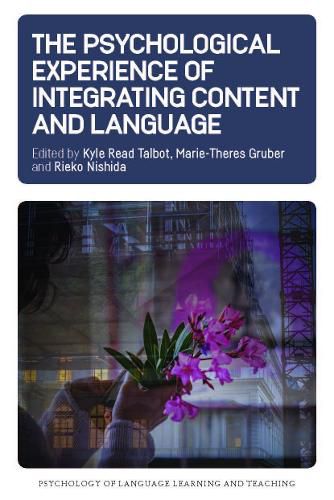Readings Newsletter
Become a Readings Member to make your shopping experience even easier.
Sign in or sign up for free!
You’re not far away from qualifying for FREE standard shipping within Australia
You’ve qualified for FREE standard shipping within Australia
The cart is loading…






This book brings together a diverse range of empirical chapters spanning various contexts and educational levels which explore the psychology of teaching and learning a subject through a second or other language. The chapters discuss both the psychological stressors and strains for learners and teachers, as well as the benefits and joys of being involved in such programmes. The studies encompass a range of areas, such as Content and Language Integrated Learning (CLIL), Foreign Language Medium of Instruction (FMI), bilingual education and other related approaches to integrating content and language. They feature a variety of psychological constructs, including identity, self-confidence, motivation, self-concept, teacher and learner beliefs, affect, anxiety, stress, mindsets, attributions and well-being, from the perspectives of both teachers and learners. This book is essential reading for anyone interested in ensuring that teachers and students are properly supported and that their experiences of integrated content and language settings enable them to flourish.
$9.00 standard shipping within Australia
FREE standard shipping within Australia for orders over $100.00
Express & International shipping calculated at checkout
This book brings together a diverse range of empirical chapters spanning various contexts and educational levels which explore the psychology of teaching and learning a subject through a second or other language. The chapters discuss both the psychological stressors and strains for learners and teachers, as well as the benefits and joys of being involved in such programmes. The studies encompass a range of areas, such as Content and Language Integrated Learning (CLIL), Foreign Language Medium of Instruction (FMI), bilingual education and other related approaches to integrating content and language. They feature a variety of psychological constructs, including identity, self-confidence, motivation, self-concept, teacher and learner beliefs, affect, anxiety, stress, mindsets, attributions and well-being, from the perspectives of both teachers and learners. This book is essential reading for anyone interested in ensuring that teachers and students are properly supported and that their experiences of integrated content and language settings enable them to flourish.